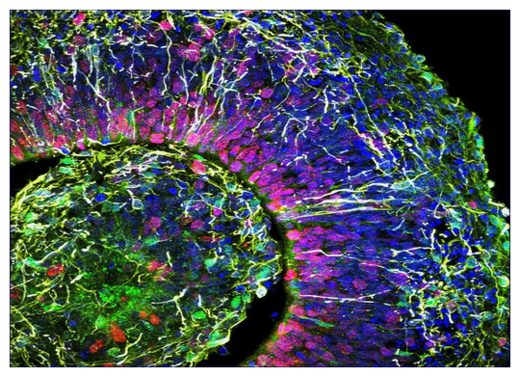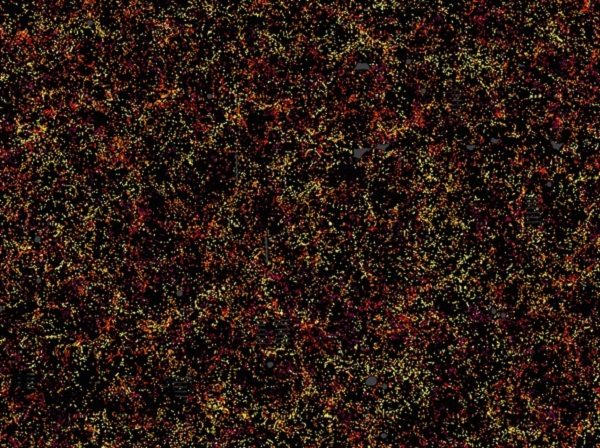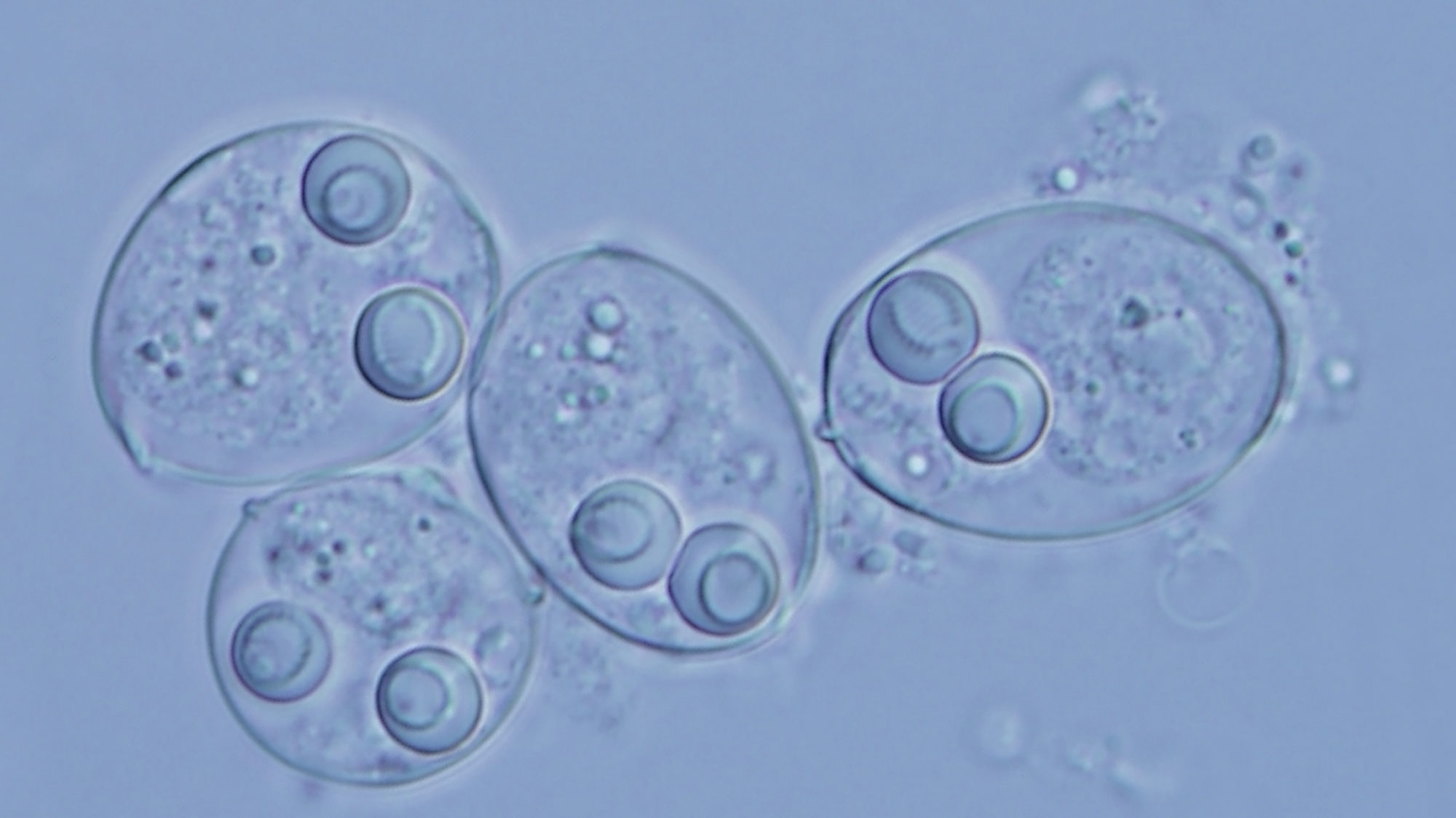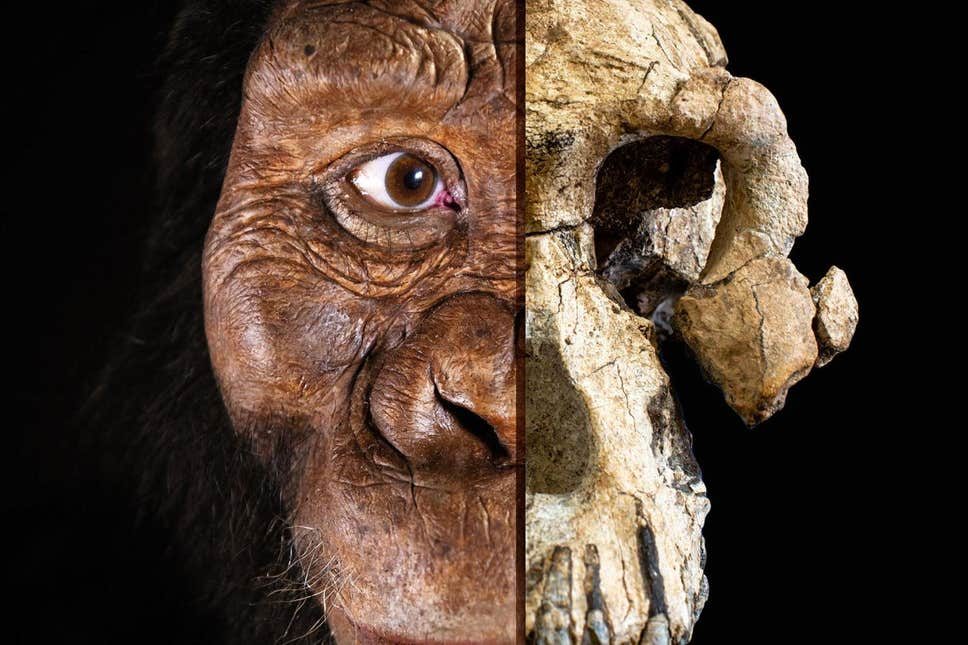
© Muotri Lab-UCTVA cross-section of a brain organoid, showing the initial formation of a cortical plate. Each colour marks a different type of brain cell.
It's a stunning finding that left the scientists wondering if it was real.
"We couldn't believe it at first - we thought our electrodes were malfunctioning," says lead researcher Alysson Muotri, a neuroscientist and stem cell researcher at the University of California San Diego in the US.
"Because the data were so striking, I think many people were kind of sceptical about it, and understandably so."
The study is a major advance in the field of brain "organoids", pea-sized versions of our most precious organ that are being co-opted in the race to find
treatments for epilepsy, dementia and cancer.
Mini-brains are typically grown from human skin cells that are magicked into a kind of master cell, called an induced pluripotent stem (IPS) cell. With further coaxing, IPS cells can become any type of cell in the body, including brain cells.
These mini-brains are already complex. They have message-sending neurons and the glial cells that support them. They also grow recognisable brain parts such as the cortex, cerebellum and even the retina.
Until now, however, the chatter between brain cells has been pretty low level, causing something of a headache for researchers.













Comment: For better or worse, computer and modern phone technology has become so integrated into our lives that it's nearly impossible to avoid. If you've been using an iPhone that could have been impacted by this, it might be wise to change all your passwords. But for everyone, it is likely best to take any reasonable precautions against attacks like this.